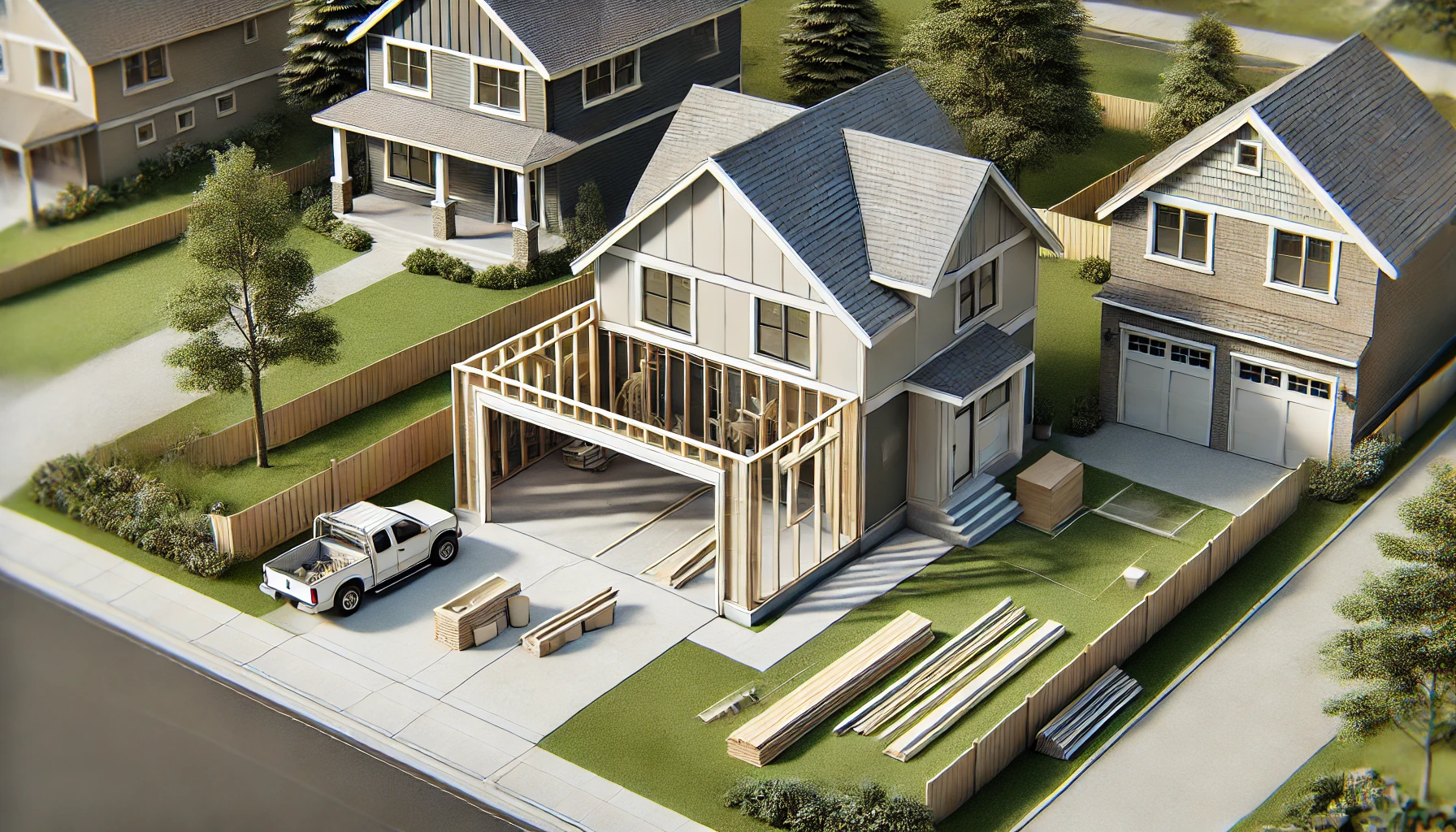With housing affordability continuing to be a concern for many Canadians, the federal government is taking steps to ease the process of adding secondary suites, such as basement apartments and laneway homes, to existing properties. The latest mortgage insurance changes aim to provide homeowners with better financing options to support this goal. This move not only benefits homeowners looking for additional income but also helps address housing supply shortages. This blog talks about everything you need to know about these new mortgage insurance rules and how they support housing densification initiatives.
Mortgage Refinancing for Secondary Suites: A New Opportunity for Homeowners
Effective January 15, 2025, the government will allow homeowners to refinance their mortgages for the purpose of adding rental units to existing homes. This initiative enables property owners to access up to 90% of the property’s value, including the value added by the secondary suite. With an increased property value cap of $2 million, these mortgage insurance changes open doors for more Canadians to participate in this new program.
Why the Focus on Secondary Suites?
Secondary suites provide several benefits:
Boosting Housing Supply: Secondary suites offer an effective way to increase housing availability in established neighbourhoods.
Income Generation: Homeowners can generate rental income by converting unused spaces, such as a basement or garage, into rental units. This can also help cover mortgage payments or fund other household expenses.
Supporting Multi-Generational Living: These additional units allow families to stay close together while enjoying their own private spaces, ideal for seniors or young adults.
Steps to Add Rental Units in Canadian Homes
The new rules provide a clear roadmap for financing secondary suites:
1. Verify Eligibility: Homeowners must occupy one of the units or have a close relative who does. The suite cannot be used as a short-term rental.
2. Meet Municipal Requirements: Any new suite must be self-contained and meet all local zoning laws. This includes ensuring that the unit has its own entrance and complies with safety regulations.
3. Secure Financing: With the updated loan-to-value ratio of 90%, homeowners can access a significant portion of their home’s value. The mortgage insurance rules for home additions now allow for a maximum 30-year amortization, giving borrowers more flexibility in repayment.
4. Complete the Application: After meeting the above requirements, homeowners can apply for refinancing through their lender, who will submit the mortgage insurance application on their behalf.
Mortgage Refinancing for Secondary Suites: Key Financial Aspects
These policy changes provide an attractive financing solution for homeowners seeking to create new rental spaces. Here’s a breakdown of the financial benefits:
Increased Property Value Cap: Homeowners can now access financing for properties valued up to $2 million, making it easier to add units even in higher-cost markets.
Extended Amortization: Borrowers can spread repayments over 30 years, making monthly payments more manageable.
Flexible Loan-to-Value Ratio: With refinancing allowed up to 90% of the property value, including the value added by the secondary suite(s), more Canadians can afford to convert existing spaces into rental units.
Options for Creating Secondary Suites: From Basements to Laneway Homes
Secondary suites come in various forms. For homeowners with a detached garage, converting it into a rental unit can be an excellent way to maximise property value and generate income. Another example is laneway homes, which are gaining popularity in cities with dense urban environments. Each type of secondary suite, whether a basement apartment, in-law suite, or laneway home, must comply with local zoning regulations to qualify.
Overcoming Challenges: Zoning and Legal Compliance
While the new mortgage rules provide financial flexibility, homeowners should consider potential hurdles:
Zoning Restrictions: Municipalities have different rules regarding secondary suites, especially in terms of density and parking requirements..
Permits and Inspections: To ensure compliance, homeowners must secure the necessary permits and undergo inspections. This process may vary depending on the municipality, so consulting with local authorities is crucial.
The Broader Impact: How Housing Densification Canada Benefits Communities
Encouraging housing densification helps address the national housing crisis by increasing supply without needing extensive new land developments. Secondary suites make it possible for more people to live in well-established neighbourhoods, with access to existing infrastructure and amenities. As more homeowners take advantage of mortgage refinancing for secondary suites, it will also help to increase rental supply and potentially stabilise rent prices.
Conclusion
The new mortgage insurance rule changes offer significant monetary benefits for homeowners looking to add rental units. At the same time, they help create more affordable housing options and support Canada’s growing population by expanding available housing.
FAQs on New Mortgage Insurance Rules for Secondary Suites
1. What types of secondary suites are eligible for financing?
Only self-contained units, such as basement apartments or laneway homes, that meet municipal zoning requirements are eligible.
2. Can the secondary suite be used as a short-term rental?
No, the suite cannot be used for short-term rentals, as the goal is to provide long-term housing options.
3. What if the project costs exceed the financing available?
Additional costs beyond the mortgage refinancing limit must be covered by the homeowner, as the loan cannot exceed the project’s expenses.
4. How does refinancing impact my existing mortgage?
Refinancing means adjusting your current mortgage terms to incorporate the additional loan for secondary suite construction. This can extend the repayment period but may result in lower monthly payments due to the 30-year amortization option.
5. Can non-residents access this financing option?
No, this program is limited to Canadian residents who occupy one of the units.

